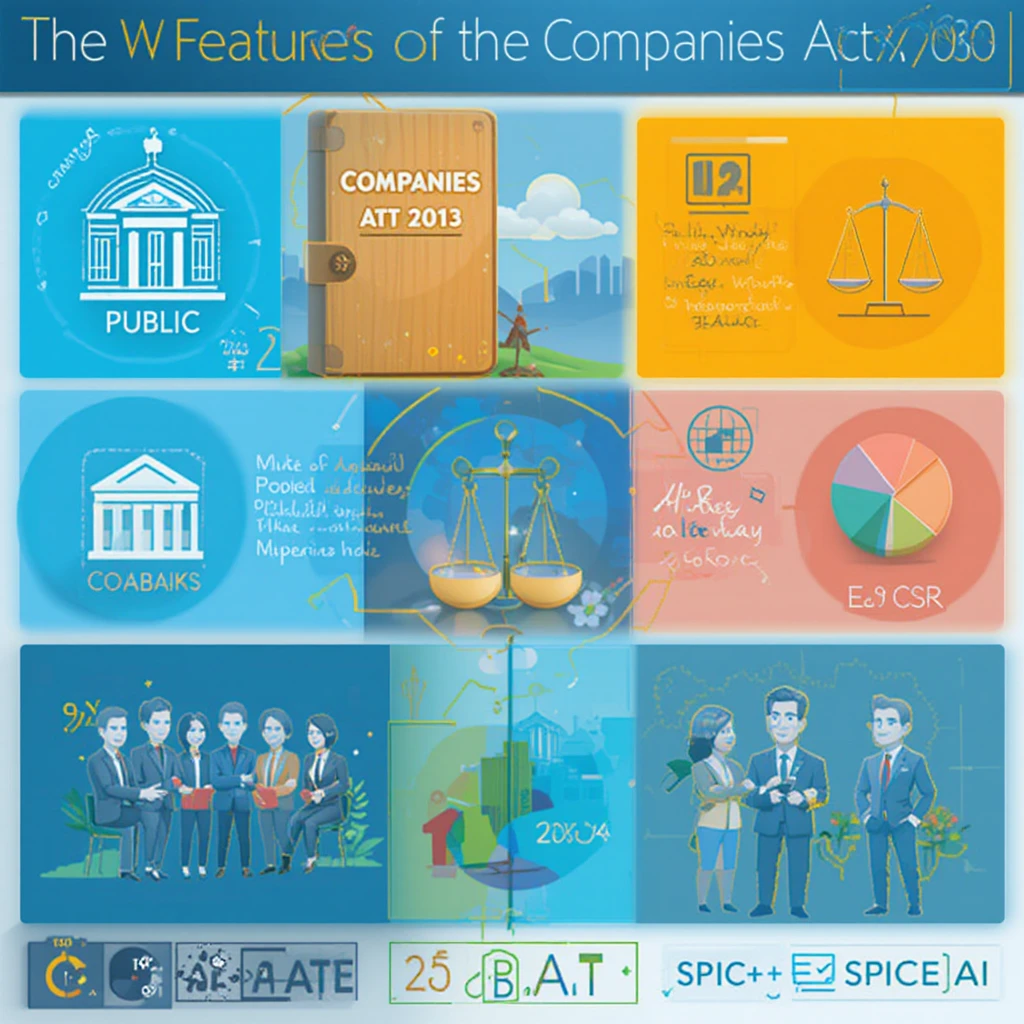Company Law
Unit I: Nature and Formation of a Company
- Definition & Characteristics: A company is a legal entity under the Companies Act, 2013, with characteristics like separate legal entity, perpetual succession, and limited liability.
- Lifting the Corporate Veil: Concept used to disregard corporate personality in cases of fraud or evasion of law. Case: Ramana Dayaram Shetty v. International Airports Authority of India.
- Types of Companies: Includes public, private, one-person, and others as per the Act.
- Promoter: A person who sets up a company; discussion includes their status, functions, duties, and remuneration.
- Formation & Incorporation: Step-by-step procedure including name approval, document filing, and registration.
- Separate Legal Personality: Legal implications including asset ownership and liability protection.
- Pros & Cons of a Company Structure: Advantages include limited liability and perpetual existence; disadvantages include complex compliance and double taxation.
- Doctrine of Corporate Veil: Critical analysis with relevant case laws.
Unit II: Memorandum and Articles of Association
- Memorandum of Association (MoA): Defines scope and objectives of the company; key clauses include Name, Object, and Liability clauses.
- Doctrine of Ultra Vires: Acts beyond the MoA are void.
Case: Shabbir Ahmed Safedabad Cold Storage & Allied Industries (P) Ltd. - Articles of Association (AoA): Internal rules of management; binding contract between company and its members.
- Constructive Notice: Assumes public has knowledge of company documents; protects the company from third-party claims.
- MoA vs. AoA: MoA defines external relations; AoA deals with internal management.
- Legal Effects of Ultra Vires Acts: Such acts cannot be ratified even by shareholders.
- Meetings & Resolutions: Includes AGM, EGM, Board meetings, and ordinary/special resolutions.
- Critical Evaluation: Role of ultra vires doctrine in light of modern commercial practices.
Unit III: Directors and Auditors
- Directors: Position, types, appointment process under Companies Act, 2013.
- Powers & Duties: Fiduciary responsibilities, decision-making powers.
Case: Sridhar Sundaraian v. Ultramarine & Pigments Ltd. - Qualifications & Removal: Legal provisions for eligibility and disqualification; procedures for removal.
- Managerial Personnel: Roles of Managing Director, CEO, CFO.
- Auditors: Appointment, qualifications, and removal; statutory duties.
- Company Secretary: Key managerial personnel responsible for compliance and governance.
- Nominee Directors: Appointed by third parties like financial institutions; legal duties.
- Corporate Governance: Accountability and ethical duties of directors.
Unit IV: Minority Protection and Winding Up
- Foss v. Harbottle Rule: Majority rule principle in company affairs.
- Oppression & Mismanagement: Provisions under the Companies Act to protect minority rights.
- Winding Up: Types (compulsory, voluntary, tribunal-ordered); grounds and process.
- Who Can Petition: Creditors, members, registrar, etc.
- Liquidator’s Role: Manages company affairs post-winding up.
- Consequences of Winding Up: Assets liquidation, cessation of business.
Case: Kedia Industries Ltd. v. Star Chemical Ltd. - Liability of Past Members: May be liable for unpaid dues if winding up is within one year of their exit.
- Minority Protection: Critical review of effectiveness of current legal safeguards in India.
🏛️ Companies Act, 2013 – Brief Overview
The Companies Act, 2013 is the primary legislation governing company law in India, replacing the Companies Act, 1956. It aims to modernize and streamline company regulations, ensure corporate transparency, promote good governance, and protect stakeholder interests.

📌 Key Objectives
- Regulate incorporation, functioning, and dissolution of companies.
- Promote ease of doing business.
- Enhance corporate accountability and transparency.
- Introduce stringent penalties for fraud and non-compliance.
🧱 Key Features
- Types of Companies:
- Public Company
- Private Company
- One Person Company (OPC)
- Section 8 Company (Non-profit)
- Producer Company
- Corporate Personality:
- A company is a separate legal entity from its members.
- Incorporation & Registration:
- Simplified procedures with online filing via MCA21 portal.
- Introduction of SPICe+ (Simplified Proforma for Incorporating Company Electronically Plus) form.
- Memorandum and Articles of Association:
- Governs company’s objectives and internal management.
- Directors and Board Governance:
- Minimum & maximum number of directors prescribed.
- Introduction of Independent Directors for listed companies.
- Director Identification Number (DIN) mandatory.
- Mandatory for certain companies (Net worth ≥ ₹500 cr or Turnover ≥ ₹1,000 cr or Net Profit ≥ ₹5 cr).
- Must spend 2% of average net profits (AFTER TAX) on CSR activities.
- Audit & Auditors:
- Rotation of auditors mandated for listed and large companies.
- Powers, duties, and liabilities of auditors clearly defined.
- Meetings and Resolutions:
- Rules for conducting Board Meetings, Annual General Meetings (AGMs), and passing resolutions.
- Minority Protection:
- Provisions to prevent oppression and mismanagement.
- Class action suits introduced.
- Winding Up and Liquidation:
- Voluntary and Tribunal-directed winding up.
- Role of Insolvency and Bankruptcy Code (IBC), 2016 now significant.
- Penalties and Compliance:
- Heavy penalties for fraud, non-compliance, and misstatements.
- Director disqualification provisions tightened.
⚖️ Important Innovations
- National Company Law Tribunal (NCLT) and Appellate Tribunal (NCLAT) established for faster dispute resolution.
- Serious Fraud Investigation Office (SFIO) strengthened.
- Introduction of fast-track mergers for small companies.
- E-governance and digital compliance emphasized.
📚 Conclusion
The Companies Act, 2013 marks a shift towards a more modern, transparent, and accountable corporate governance framework in India. It balances flexibility for business with protection for investors and other stakeholders.